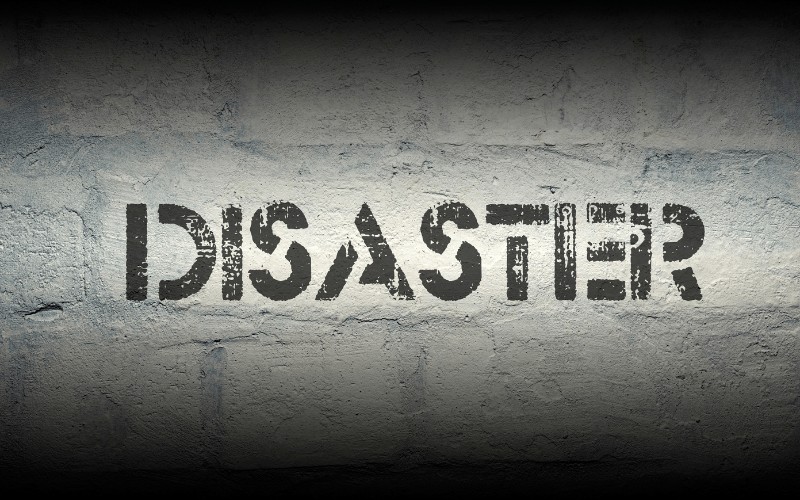As Mother’s Day approaches, we wanted to take some time to highlight the bond between caregivers and children. In therapy, this bond is often referred to as attachment. We turned to EMDRIA members Rachel Harrison and Jamie Sedgwick to tell us more about attachment and EMDR therapy.
Healing Early Attachment with EMDR Therapy

Rachel Harrison, LCPC
Guest Blog Post by Rachel Harrison, LCPC, NCC and Jamie Sedgwick, LCPC, NCC

Jamie Sedgwick, LCPC
More and more people are seeking EMDR therapy to help them heal from trauma. Oftentimes, people looking for a qualified EMDR clinician have tried a variety of treatment modalities in hopes of healing. For them, EMDR therapy can feel like their final hope. The good news is EMDR therapy is an effective treatment modality for successfully treating attachment-based trauma. Attachment is the relational interplay between parent and child that shapes their brains (child and parent) and impacts their way of relating, their connection, and ultimately a child’s self-esteem.
How attachment develops
Attachment is a sensory-based experience that occurs when the caregiver responds to and meets the needs of the infant in distress. For example, an infant in distress due to hunger would be picked up, comforted, and fed by the primary caregiver. In this example, not only is the primary need of hunger being addressed, but the primary caregiver is also providing regulation through physical closeness and, perhaps, even introducing new stimuli for soothing, such as singing. This same example can also be used to help understand the attachment cycle, which tells us the following happens:
- The child experiences distress
- The primary caregiver meets the need causing the distress
- The child experiences relief from the distress as a result
- The child learns to trust and rely on the primary caregiver
When these steps happen consistently over time, a healthy, or secure, attachment is formed between the infant and the caregiver.
Disruption of attachment
Attachment-based trauma occurs when the attachment cycle is often disrupted or not completed consistently over a course of time. Disruption of attachment occurs when:
- The infant’s needs are not met
- The infant’s distress is not relieved or additional harm or pain is caused
- The roles between the primary caregiver and the child become confused
In the previous example of an infant experiencing distress due to hunger, the attachment cycle could be interrupted if the caregiver cannot help to effectively relieve the feeling of hunger and offer comfort. If disruption of the attachment cycle occurs regularly, the child cannot develop a secure attachment with the caregiver, and this could impact attachment style and understanding of relationships later in life as well.
Understanding attachment styles
To better understand the impact of the disruption of the attachment cycle on the development of attachment style, let’s consider “The Strange Study” by Mary Ainsworth in the 1970s. The Strange Study observed the responses of infants when separated from their mothers and identified three different attachment types:
- secure
- insecure
- avoidant
Main and Solomon added a fourth attachment style, disorganized attachment, with their research in the 1990s. To better understand each attachment style, it is helpful to consider how the attachment style presents in infants/children and in adulthood.
A person with a secure attachment is connected in a healthy way that feels safe to both parties. A child with a secure attachment to their caregiver usually experiences some distress when separated from their primary caregiver(s) and is happy to see the caregiver return after a separation. An adult with a secure attachment style is able to form deep, trusting relationships while also maintaining healthy boundaries and their individual identity.
A person with an insecure attachment is one in which at least one party does not feel safe in the permanency of the relationship. In children, this may be observed as an overly connected child with a fear of separation from their caregiver. In adults, this often presents as difficulty trusting others and a fear of being left or abandoned. The not-so-clinical term most often used to describe an insecure attachment is “clingy.”
A person with avoidant attachment often avoids engaging in anything too emotionally or physically connected to someone else while also holding high expectations of a caregiver or partner. In children, this often presents as the child showing little interest in the primary caregiver. Separation and reunification from a primary caregiver often elicits no emotional response or recognition. In adults, this presents as hyper-independence and self-reliance. Adults with avoidant attachment will often downplay the importance of relationships and may avoid them altogether.
A person with disorganized attachment often views relationships as a means to an end— connections are often surface level, with the focus being on achieving a goal. In children, this is observed as inconsistent and unpredictable reactions and responses to the primary caregiver. At times, the child may seek closeness from the primary caregiver before pushing away, shutting down, or becoming angry. In adults, this is often described as a “push-pull” dynamic in a relationship. There is often an inconsistency in how the person interacts with their partner that alternates between seeking closeness and intimacy in the relationship and creating ruptures in order to push away from the relationship.
Attachment and the therapeutic relationship
An important part of incorporating attachment theory with EMDR therapy to effectively treat attachment-based trauma is understanding how attachment style impacts the therapeutic relationship and, more specifically, the process of establishing rapport. An important part of the preparation work for EMDR therapy is building therapeutic rapport to create enough safety for trauma work and truth telling. However, we are talking about a type of relationship. When we understand that someone’s attachment style impacts how they understand and interact with all of their relationships, we begin to understand that someone’s attachment style is also key when developing therapeutic rapport and creating safety within the therapeutic relationship. To fully understand the impact of attachment style on the therapeutic relationship and rapport building, let’s consider each of the four identified attachment styles and special considerations for rapport building.
Special considerations with secure attachment
An individual with a secure attachment style is able to self-advocate and find a therapist who is a good fit for their therapeutic goals. This individual would also feel safe enough to clearly communicate their therapeutic goals and let the therapist know when something isn’t working for them. This person would also feel safe enough to share openly about their experiences and emotions. In the right fit therapeutic relationship, rapport building feels natural and supports effective treatment planning.
Special considerations with insecure attachment
An individual with an insecure attachment style often struggles to feel safe within the therapeutic relationship and fears the therapist will end the therapeutic relationship. This could impact the individual’s ability to feel safe enough to tell the truth about why they are seeking therapy, as well as whether or not the therapeutic interventions being used feel effective for them. As a result, rapport building often takes time, and an important component of creating enough safety for truth telling is a felt sense of unconditional positive regard from the therapist.
Special considerations for avoidant attachment
An individual with an avoidant attachment style struggles to connect with the therapist. It may take time for the individual to feel safe enough to be able to share some of the important information needed for history gathering and treatment planning. This individual may also struggle to know “what to do” in therapy and identify feeling frustrated with the process. Rapport building to establish enough safety in the therapeutic relationship takes time and may require the therapist to get creative in session. Incorporating reciprocal activities and games, even when working with adults, can be helpful in beginning to establish rapport.
Special considerations for disorganized attachment
An individual with a disorganized attachment style can vary in their presentation and engagement in the therapeutic relationship. For example, in one session the individual could feel connected and engage openly and, in another session, seem to feel distant with difficulty engaging with the therapist. A sense of too much rapport and safety within the therapeutic relationship too quickly, could create enough fear that the individual chooses to withdraw from therapy. When building rapport, it is important to incorporate and model healthy communication and boundaries while being mindful of pacing to the client’s tolerance.
Attachment and EMDR therapy
Rapport building may take longer when working with individuals who have experienced attachment-based trauma, resulting in insecure, avoidant, or disorganized attachment styles. While this may feel challenging for the client and the therapist, it is important to keep in mind the true healing power of this process when working with attachment-based trauma. It is through this process that the therapeutic relationship becomes a positive resource for adaptive communication, boundaries, and secure attachment.
Once enough therapeutic rapport has been established, Phases 3-8 of EMDR therapy can be utilized to desensitize and reprocess attachment-based trauma. There are even EMDR protocols, such as Sandra Paulsen’s Temporal Integration, for preverbal EMDR targets. It is not uncommon for the adaptive information related to therapeutic rapport to be utilized as part of the resolution of these attachment-based EMDR targets. Additionally, the therapeutic rapport often becomes stronger throughout Phases 3-8 as the EMDR therapist attunes with the client throughout the reprocessing phases.
Through the establishment of a strong therapeutic rapport and the implementation of the 8 Phases of EMDR Therapy, an individual can heal from attachment-based trauma and learn to develop a secure attachment in relationships.
Rachel Harrison, LCPC, NCC, has trained hundreds of clinicians in EMDR therapy. She first learned EMDR in 2011 and it changed her practice so much for the better that she went on to become a consultant and trainer. Harrison believes that every therapist needs to know how to provide excellent EMDR therapy, because there is nothing else in the therapy world that can do what EMDR does. She is the Founder and CEO of Trauma Specialists Training Institute and Trauma Specialists of Maryland, Delaware and Pennsylvania. She is passionate about treating trauma.
Jamie Sedgwick, LCPC, NCC, is licensed in Maryland. She is an EMDR Basic Trainer and offers Advanced EMDR Trainings on the following topics: Mastering Phase 2, EMDR as an Effective Treatment Modality for Borderline Personality Disorder and Attachment-Informed EMDR. As a trainer and consultant, Sedgwick is passionate about helping clinicians learn to implement EMDR into their practice in a way that makes sense for the clinician and their clients.
References
Holmes, J. (2014). John Bowlby and attachment theory. Routledge, Taylor & Francis Group.
Paulsen, S. L. (2017). When There Are No Words. A Bainbridge Institute for Integrative Psychology Publication.
Back to Focal Point Blog Homepage
Additional Resources
If you are a therapist interested in the EMDR training:
- Learn more about EMDR therapy at the EMDRIA Library
- Learn more about EMDR Training
- Search for an EMDR Training Provider
- Check out our EMDR Training FAQ
If you are EMDR trained:
- Check out the EMDRIA Let’s Talk EMDR Podcast
- Check out the EMDRIA Focal Point Blog
- Learn more about EMDRIA membership
- Search for EMDR Continuing Education opportunities
If you are an EMDRIA™ Member:
- Learn more about EMDR Consultation
- Find clinical practice articles in the EMDRIA Go With That Magazine®
- Search for articles in Journal of EMDR Practice and Research in the EMDRIA Library
Date
May 9, 2025
Contributor(s)
Rachel Harrison and Jamie Sedgwick
Topics
Attachment





